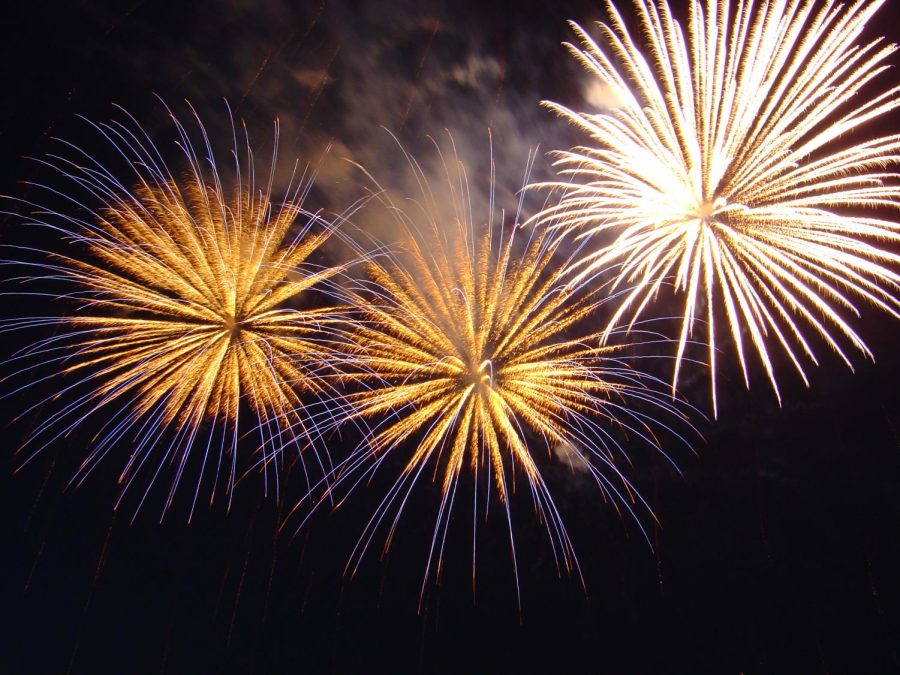New Year’s traditions in different cultures
March 22, 2019
At midnight on Jan. 1, Americans celebrate the new year with cheers and fireworks, all while watching the iconic ball drop in New York City’s Times Square. But around the world, other countries ring in the new year with unique cultural traditions of their own.
Iran:
Unlike many other countries, Iran celebrates Persian New Year, or Nowruz, on spring equinox, between March 19 and 21. Nowruz originated an estimated 3,000 years ago from Zoroastrianism, an ancient Persian religion. Three weeks prior to Nowruz, people begin spring-cleaning and set aside a “Haft-Sin,” a collection of seven symbolic items all beginning with the letter “sin” in the Persian alphabet, some of which include apples for beauty, dried fruit for love and vinegar for wisdom. Starting officially on spring advent, Nowruz is a 13-day affair spent with family, food and distinctive rituals. The Tuesday before Nowruz is known as “Eve of Red Wednesday,” and is typically commemorated with jumping over public bonfires. On the first day of Nowruz, to pay their respects, families will visit the homes of the oldest member of the family, with the children banging pots and pans until given a sweet. Children also receive banknotes from their elders.
Australia:
As the first country in the world to enter the new year, Australia celebrates the holiday in the middle of summer, with many spending New Year’s Eve with parties on the beach. Major cities hold their own celebrations; the Sydney Harbour Bridge attracts spectators with more than 80,000 fireworks, while the area around the Yarra River in Melbourne welcomes picnickers and restaurant goers.
Japan:
New Year, known as Shogatsu in Japan, is considered one of the most important holidays in the country. Because the new year is thought of as entirely independent of the previous year, Bonenkai parties, or Forget-the-Year parties, are held among friends and coworkers in December to forget, as the name suggests, the troubles of the past year. New Year’s Eve dinner always includes soba noodles, which symbolize longevity. On New Year’s Day, traditions including watching the first sunrise and visiting a shrine or temple, where a bell is rung 108 times, symbolizing ridding of the 108 human sins of the previous year.
Turkey:
Many traditions for Turkish New Year’s Eve are borrowed from western celebrations of Thanksgiving and Christmas, including Noel Baba, or Turkish Santa Claus, and eating roast turkey during family dinner. On New Year’s Eve, state TV channels announce the winners of the national lottery, which is popular among Turkish residents because of the especially large prize, on New Year’s Eve. City squares, such as Taksim Square in Istanbul, often hold festivities including fireworks that people living in big cities and small towns all come see.
Spain:
Known as Nochevieja in Spanish, New Year’s Eve in Spain is known for its superstitions and fantastic fiestas. The most widespread tradition is to eat 12 grapes, one on each chime of the last 12 seconds of the year. Being able to chew and swallow all 12 in time is said to bring good luck for the new year. As in America, a popular beverage for when the clock strikes midnight is Spanish champagne, or Cava, often drunk with a gold ring or coin at the bottom of each glass. Drinking the whole glass in one go to reach the gold object supposedly brings prosperity. Additionally, the Spanish believe that to start the year off on “the right foot,” one should literally take the first step of the year using the right foot. On New Year’s Day, it is common to eat lentils, which resemble coins, thus symbolizing wealth.
The Netherlands:
The Netherlands observe customs similar to those in America, such as fireworks and alcohol, but also a few more unique traditions. On New Year’s Day each year, around 30,000 people, in spite of the freezing weather, dive into the Dutch sea for an annual event known as New Year’s Dive. Divers sport braided orange caps, and some even participate to raise money for a charity of their choosing. To dispose of remaining Christmas trees, the Dutch often burn the trees in bonfires, a tradition that takes place during the first few days of the New Year. A popular delicacy around the holidays and particularly on New Year’s Eve are sugar-coated Oliebollen, otherwise known as Dutch donuts.
Brazil:
In Brazil, clothing is a highly symbolic element of New Year’s festivities. White symbolizes peace, green pertains to good health, yellow represents wealth, red is said to attract romance and purple signifies inspiration. On New Year’s Day, more than two million Brazilians go to the sea to throw flowers and light candles in honor of Iemanja, the mythical Brazilian goddess of water. Another tradition relating to the sea is the superstition that jumping over seven different waves for seven New Year’s wishes will bring good luck and allow those wishes to come true.



































































